4 Tips to Prevent Pterygium
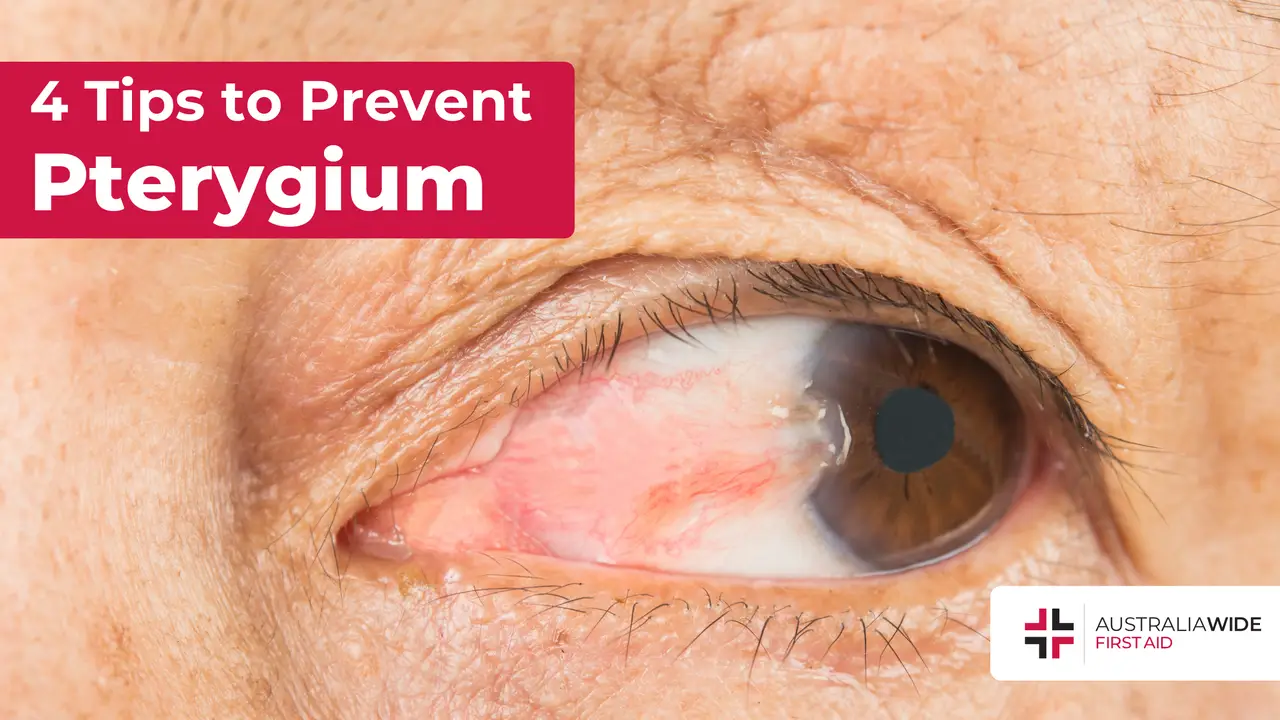

Pterygium, also known as surfer's eye, is an ocular surface disease characterised by a growth of limbal and conjunctival tissue over the adjacent cornea. Due to this change in the eye, patients may experience inflammation.
Depending on population studies, the prevalence of pterygium ranges between 1% and more than 30%. A meta-analysis of 20 studies published in 2015 indicated that the pooled prevalence of pterygium is around 10%. Meanwhile, Australian optometrists state that pterygium is reported in about 1% of Australians, having developed cumulatively after repeated exposure to UV radiation. The condition is understandably common in people who spend lots of time outdoors, such as farmers, tradespeople, and surfers — as the name suggests. Pterygium may also induce other eye health concerns such as astigmatism and high-order cornea aberrations, where researchers found that the size of the pterygium directly correlates with the amount of both conditions.
Fortunately, you can practice many eye health habits to help prevent the development of pterygium and other risks. Below, we'll share four tips for preventing pterygium
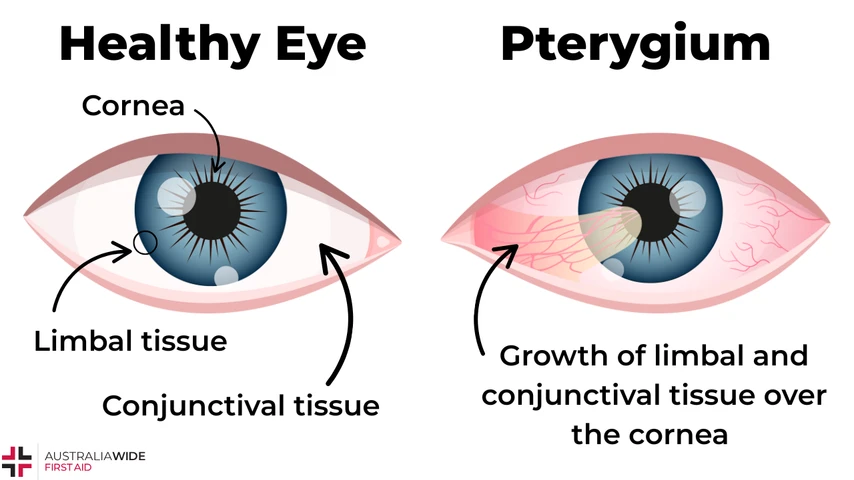
As mentioned above, the development of pterygium is associated with prolonged UV exposure. Aside from potentially developing a surfer's eye, spending long periods under the sun's harmful UV rays can also lead to other eye and vision concerns. This includes cataracts and macular degeneration, as well as more severe conditions like cancer.
One of the best ways to protect the eyes from UV exposure is to wear sunglasses. Nowadays, most sunglasses on the market offer optimal UV protection. Depending on your lifestyle and outdoor activities, a pair of polarised sunglasses can be a good alternative. People who spend lots of time on beaches, for example, can benefit from sports eyewear brand Oakley's polarised shades, including functional designs like the Radar® EV Path®, which offers a wider field of view for outdoor activities like running, biking, or even lounging at the beach.
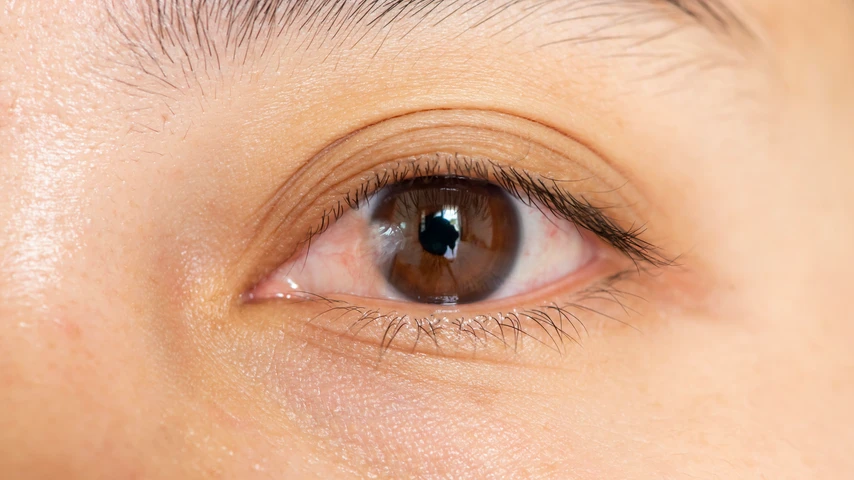
Aside from investing in a good pair of sunglasses, it can also help to wear hats or visors if you're going to spend a lot of time outdoors. Wide-brimmed hats or visors can help provide shade for your eyes from harsh sunlight. Still, this doesn't mean your hat should entirely replace your shades. Eye health experts recommend wearing both when you can for optimal protection.
Wearing wider or bigger hats also helps keep the skin around your eyes safe from the sun. Studies have shown that the skin around your eyes is thinner and, subsequently, more vulnerable to health risks caused by UV damage. This includes wrinkling and skin ageing, as well as redness, sunburn, and irritation if untreated.

While sunglasses certainly qualify as protective eyewear, it's still important not to forget other forms of protective eyewear depending on your outdoor activity. Goggles, for example, help provide protection from outdoor elements like wind, dust, or debris, which your eyes are more vulnerable to during activities like running or cycling.
If you're especially keen on biking, you may want to invest in a pair of cycling glasses, such as BBB's new Chester shades. These shades combine the advantages of full-frame and frameless glasses, offering an unobstructed view while still retaining the durability of other full-frame sunglasses. There are also smaller versions of the bio-based Chester frames, aptly named the Chester Narrow, if you're not a fan of the oversized lens design.
Finally, you should also make sure you're staying hydrated. Drinking lots of water daily, especially on hot days, can help retain eye moisture and prevent dryness. On the other hand, dehydration increases the risk of eye health conditions like dry eye syndrome, irritation, and blurred vision. Combined with UV damage, this can exacerbate the risk of developing conditions like pterygium.
Staying hydrated is also a good reminder to take occasional breaks from your outdoor activities. In our post on eye strain symptoms and treatment, we highlighted the importance of taking breaks to let your eyes rest. In terms of preventing pterygia, you should make sure to take breaks from outdoor fun by staying under the shade once in a while.

May 1, 2025
Pterygium, also known as surfer's eye, is an ocular surface disease characterised by a growth of limbal and conjunctival tissue over the cornea. Fortunately, you can practice many eye health habits to help prevent the development of pterygium and other risks.
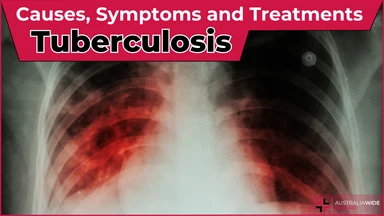
April 3, 2025
Tuberculosis is a severe bacterial infection that mainly affects the lungs and other parts of the body, including the nervous system. This contagious disease can quickly spread in crowded areas when an infected person coughs, talks, or sneezes.
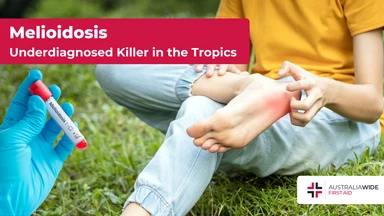
February 13, 2025
Melioidosis is a bacterial infection caused by Burkholderia pseudomallei, a microorganism found in soil and water. This infection is often underdiagnosed due to symptoms mimicking many other illnesses. As such, awareness is critical for those living or working in affected regions.